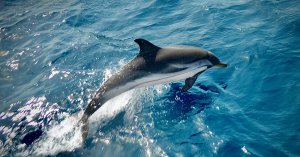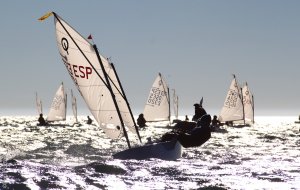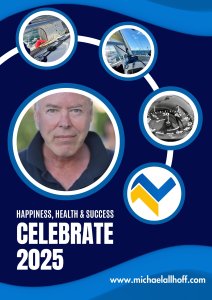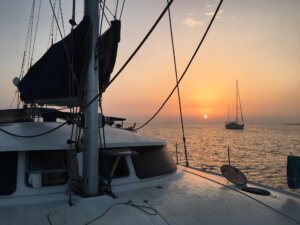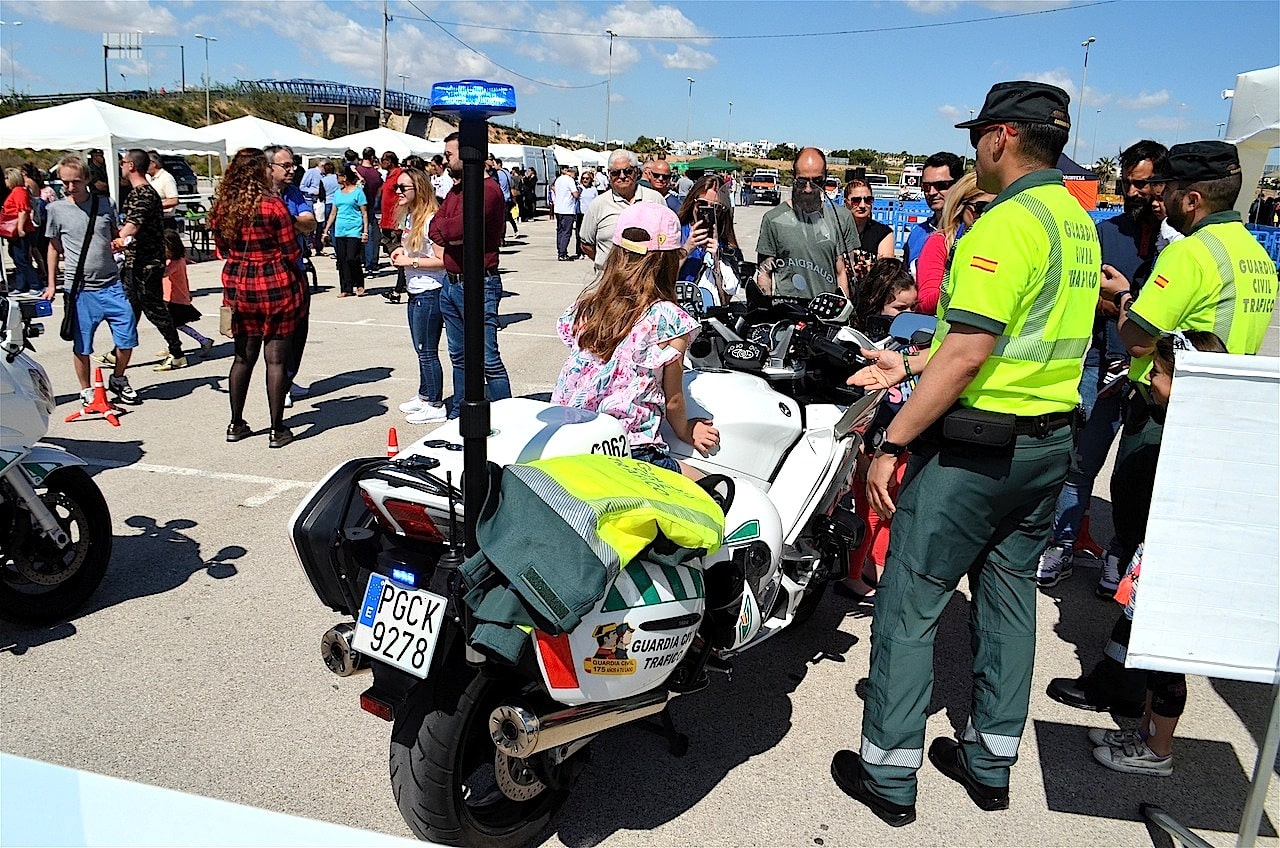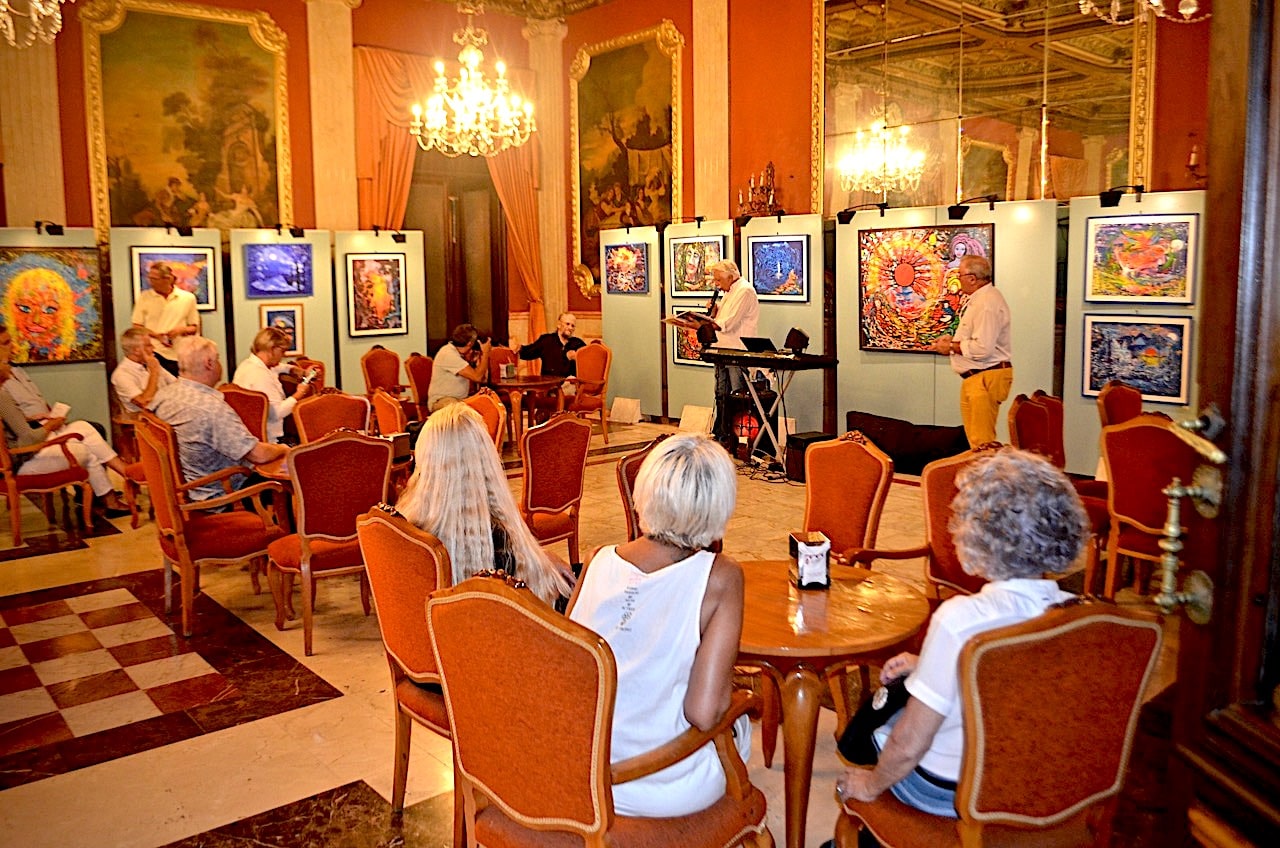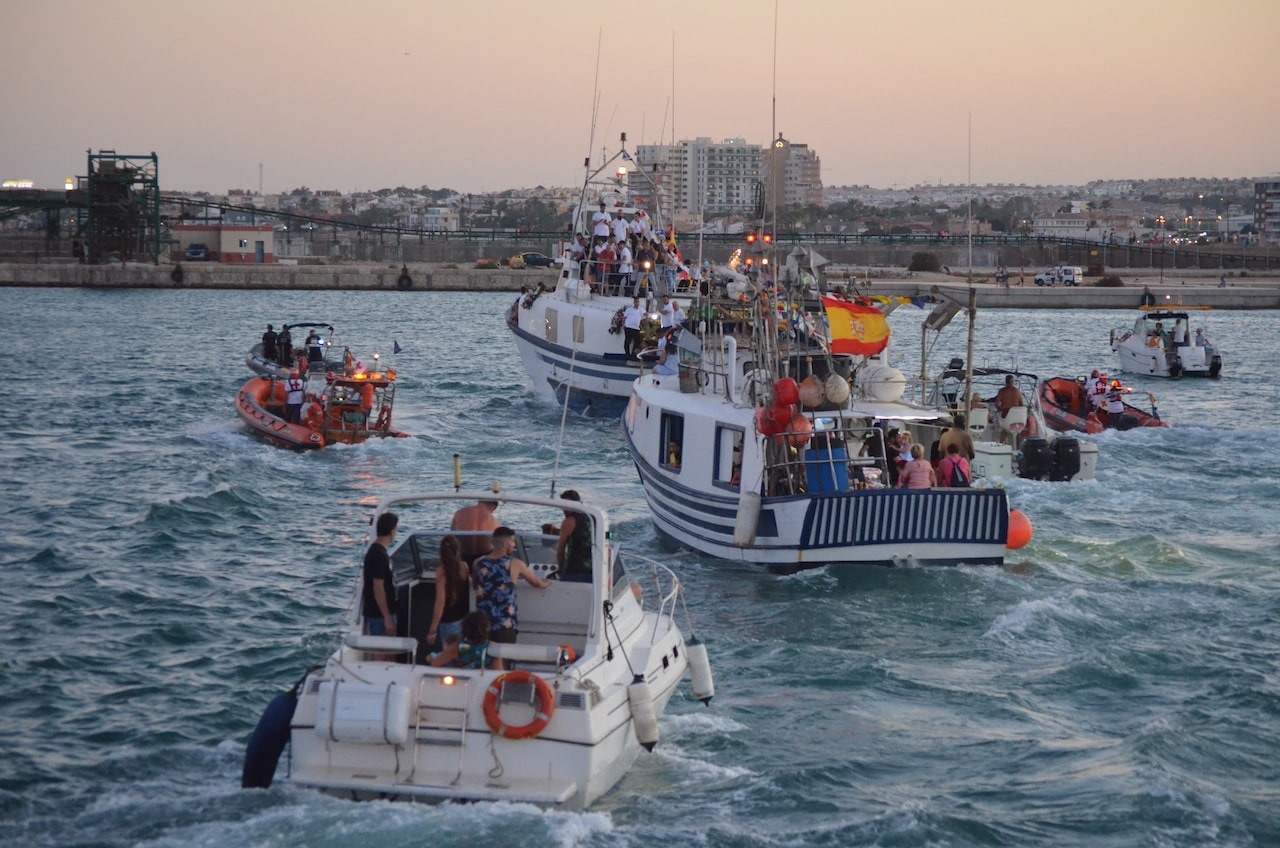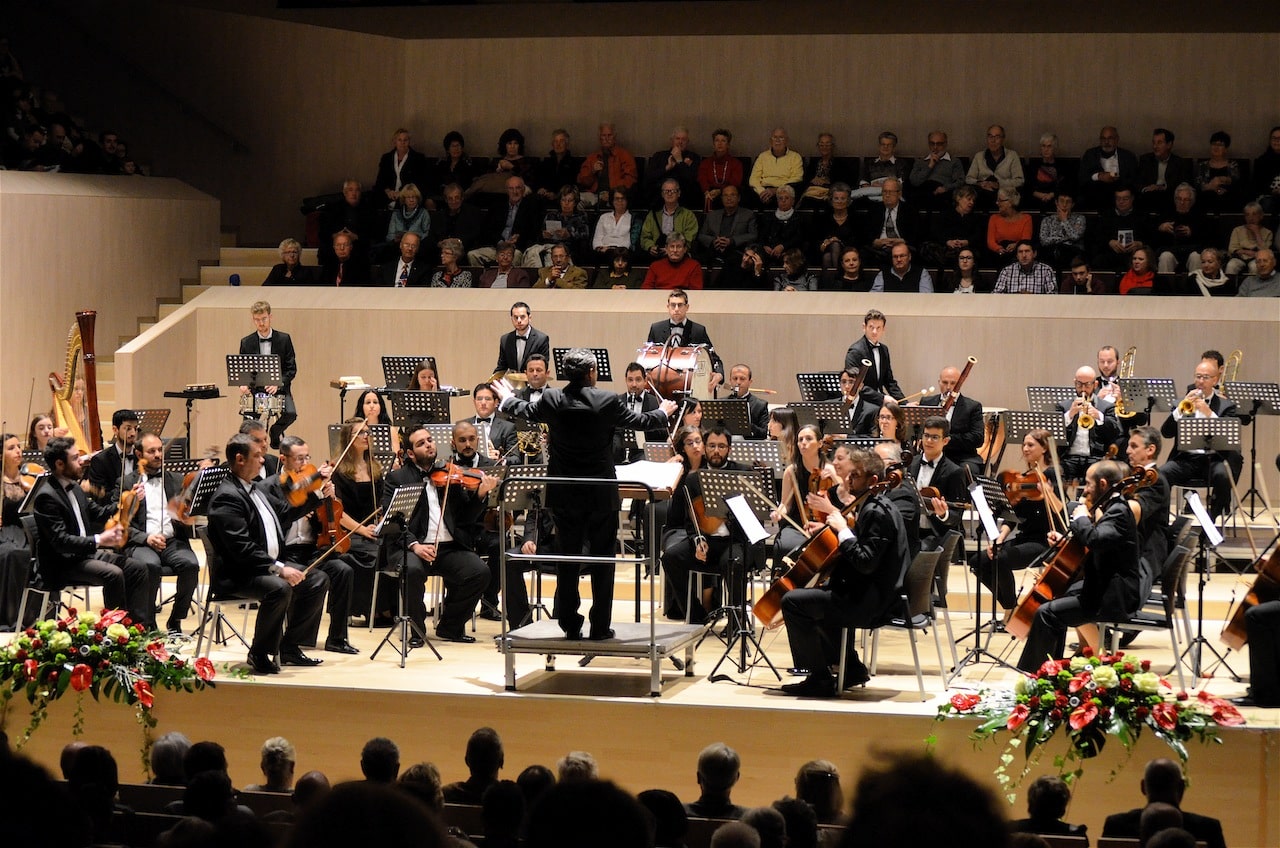Ein Biker-Traum auf der Harley-Davidson: 3.000 Kilometer über Highways und Waldwege im Süden Australiens gen “Great Ocean Road”
(longread 8 min., scroll down for English)
Get the motor running / get out on the highway
looking for adventure / in whatever comes our way
Steppenwolf: Born to be wild
Der Mythos hat die Farbe schwarz. Dreihundert Kilo Edelstahl auf zwei Rädern. Einen chromblitzenden V2-Motor mit 88 Kubik-Inch geballter Kraft. Helm auf, Handschuhe an, Start. Dann bullert die Maschine los. In einem Donnergrollen, das nur Harley-Davidson so satt auf die Straße bringt.
Erster Gang, Hahn auf. Lustvoll dröhnend rollt das Ur-Teil an. Ein Stahlgewitter. Die ohrenbetäubende Ouvertüre eines 3000 Kilometer weiten Cruisings durch Australien – von Sydney über Melbourne zur Great Ocean Road. Downunder, irgendwo zwischen Bondi Beach und Surfers Paradise.
Am Stadtrand von Sydney tost der Verkehr sechspurig über den „Highway 66“. Rush-Hour. Richtung Innenstadt stehen die Autos im Stau. Stadtauswärts hat man freie Fahrt. Es gibt Gegenden, die eine besondere Faszination auf den Reisenden ausüben. Orte, die allein mit ihrem Namen schon unsere Phantasie anregen. Katmandu zum Beispiel. Casablanca vielleicht. Australien jedoch, das ist ein Inbegriff für die Sehnsucht nach der Ferne.
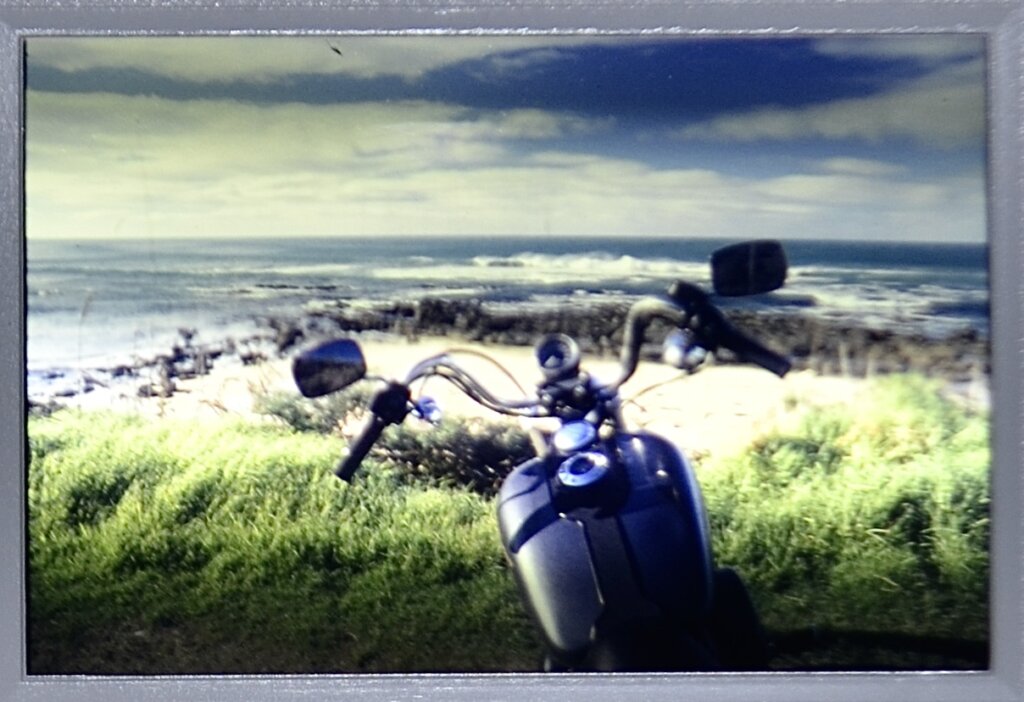
Rückblende: Landeanflug auf Sydney. Im Abendrot schaut man aus dem Fenster des Fliegers auf eine der schönsten Städte der Welt. Tief unten spiegeln sich Harbour Bridge und Opera House im Kobaltblau des Pazifik. Wolkenberge verglühen am Himmel in Rosa und Violett, während sich die Skyline der heimlichen Hauptstadt Australiens zu Millionen Lichtern entzündet. Das Schauspiel macht glücklich.
On the road. Gen Westen, auf dem alten Hume-Highway. Die meistbefahrene Fernstraße Australiens verbindet auf 1200 Kilometer Strecke die Millionen-Metropolen Sydney und Melbourne. Bei Tempo 100 zerrt der Fahrtwind am Körper. Das Stürmen flaut nur hin und wieder im Windschatten PS-starker Trucks ab – chromglitzernde Roadtrains in australischer XXL-Konfektion.
Wer Motorrad fährt, zielt auf Veränderung. Auf den Ortswechsel. Die Ausfahrt ins Ungewisse verspricht dem Fahrenden Nervenkitzel pur. Motorradfahrer sind eigentlich moderne Abenteurer, beseelt von der Möglichkeit des Ungewöhnlichen. Und Harley-Davidson, der Mythos aus Milwaukee, lebt von dieser Faszination. Als Bill Harley und Arthur Davidson im Jahr 1903 ihr erstes motorisiertes Zweirad in den USA präsentierten, ahnten sie nicht, dass die Harley-Davidson Motor Company eines Tages die stilvollsten Motorräder der Welt bauen würde.
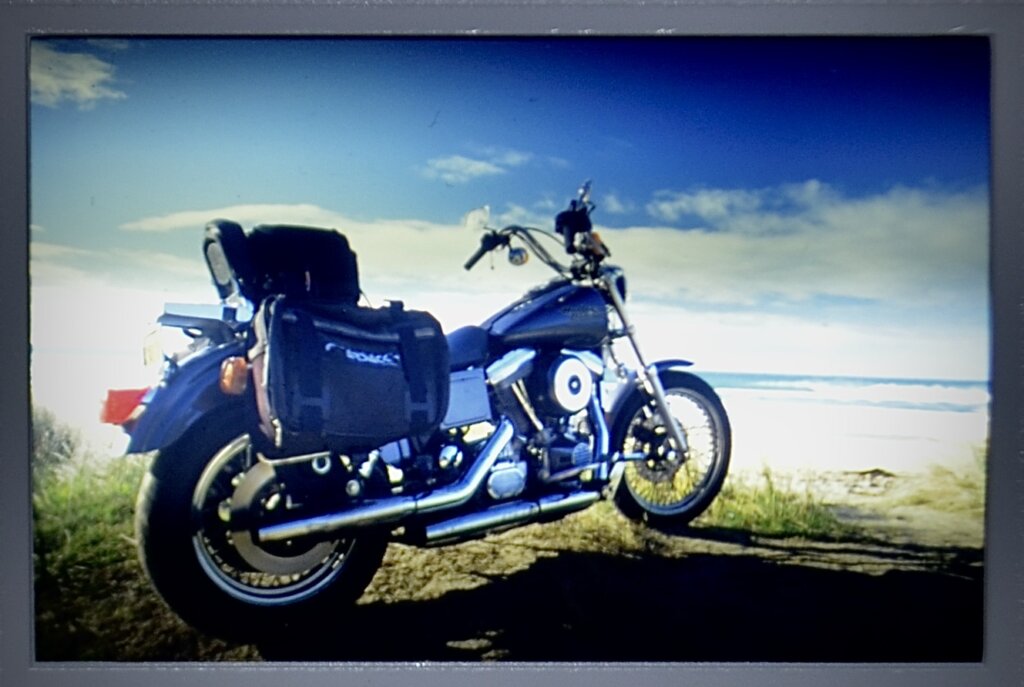
Zu beiden Seiten der Asphaltpiste rollen grüne Hügel zum Horizont, ganz so, als würden die Wogen des Pazifischen Ozeans – zu Land erstarrt – im australischen Outback auslaufen. Vereinzelt ragen gigantische, jahrhundertealte Bäume aus dem Grün wie die Masten vor der Küste versunkener Segelschiffe. Die mächtigen Eukalyptusbäume sind lebendige Zeugen einer Zeit, als noch dichte Regenwälder die Great Dividing Range im Südosten Australiens begrünten.
Der Snowy River National Park zum Beispiel. Wer den Highway südlich der Landeshauptstadt Canberra verläßt, taucht ein in das Schattenreich dieses Wunderwaldes. Irgendwann endet der Asphalt in einer Schotterpiste. In Schrittgeschwindigkeit tuckert man durch einen ursprünglichen Dschungel. Der Waldweg schlängelt sich in engen Kurven über Berge und steile Schluchten. Der Nationalpark am Fuß des Mount Kosciuszko, mit 2.228 Metern höchster Gipfel Australiens, ist so abgelegen, dass einem den ganzen Tag kein anderer Mensch begegnet.
Stop am Ufer eines Gebirgsbaches. Plötzlich ist es ganz still in diesem grünen Labyrinth aus Blattwerk und Gezweig, smaragdleuchtenden Baumfarnen, gefächerten Palmwedeln und knorrigen Stämmen. Es riecht nach Moos und feuchter Erde. Die Laubkronen 30, 40 Meter hoher Südbuchen lassen kaum einen Sonnenstrahl in das Dickicht sickern. Jahrhundertealte Urwaldriesen ragen im dämmerigen Licht des Regenwaldes auf wie die lebendigen Säulen einer heilen Natur. Ein umgestürzter Baumriese liegt am Boden. Seine Rinde ist von Flechten überzogen und fühlt sich an wie ein voll Wasser gesaugter Schwamm. Aus dem modrigen Holz recken junge Pflanzen hellgrüne Blättchen zur Sonne. Sie harren ihrer Chance in diesem tausendjährigen Kreislauf aus Wachstum, Reife, Sterben und Verfall.
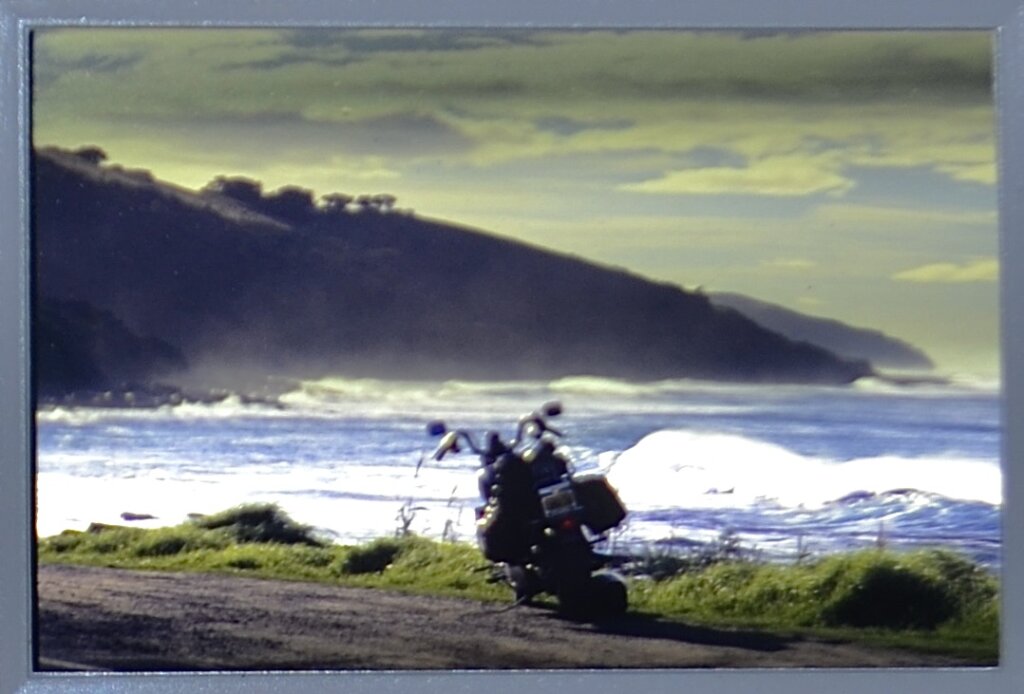
Eigentlich ist der Mensch in diesem wilden Garten Gottes nur als Gast willkommen, aber nicht zuhause. Doch der Raubbau der modernen Zivilisation hat auch in Australien die überschwengliche Kraft des Waldes gebannt wie in Kanada und auf Borneo, in Amazonien oder den USA. Feuer, Axt und Motorsäge der Siedler aus Europa haben die temperierten und tropischen Regenwälder Australiens fast vollkommen planiert. Heute grasen Millionen von Merino-Schafen auf einer kahl gerodeten Erde. Nackt entblößt wirkt die agroindustrielle Farmlandschaft nahezu obszön auf den Reporter. Allein die verbleibenden Waldflecken – geschätzte zwei Prozent des einstigen Urwalds – stehen wie grüne Archen Noahs unter dem Schutz der Vereinten Nationen und sichern die Zukunft einer einzigartigen Flora und Fauna des Fünften Kontinents. Es sind archaische Inseln der Fruchtbarkeit, umgeben von einer kultivierten Öde aus Mais- und Baumwollfeldern, Weingärten und Weideland.
Auf der Karte scheint der Umweg kurz. Tatsächlich dauert die Tour den ganzen Tag – die Fahrt nach Paradise Beach. Südlich von Eden liegt das Dorf, dessen Name wie eine große Verheißung von Schönheit, Glück und Müßiggang klingt. Landschaftlich ist Paradise Beach tatsächlich ein special effect. Schimmernd schwingt sich der einsame Strand in einen besoffen schönen Ozean. Die kristallklaren Wellen der Tasmanischen See plätschern sanft im Sand. Haushohe Dünen ziehen sich bis zum Horizont. Und über dieser surrealen Szenerie leuchtet ein wolkenloser Himmel, so blau wie Curacao.
550 Einwohner zählt Paradise Beach. Alte Menschen zumeist. „Permanents“ nennen sich die Pensionäre – die, die unentwegt bleiben. Im Gegensatz zu den Wochenend-Besuchern aus Melbourne leben sie das ganze Jahr über in Paradise Beach- und werden dort wohl auch sterben. Im Dorf gibt es keinen Pub und keine Tankstelle, keine asphaltierte Straße, nur einen Kiosk und, seit neuestem, einen Golfplatz. Schlichte Häuser ducken sich hinter den Dünen, weit verteilt über das vier Kilometer lange Küstenareal. Paradise Beach gleicht einer Schrebergarten-Kolonie, die sich aus dem Ruhrpott an die Südküste Australiens verirrt hat.
„Die Fremden klettern auf die Dünen,“ sagt Ron Bewsell, „schauen auf den endlosen Strand und können zunächst kaum glauben, was sie da sehen.“ Der ehemalige Ingenieur ist 72 und lebt seit 40 Jahren am Strand des Paradieses. Früher ist Ron im Beach-Buggy zur nächsten Bucht gefahren. Haie angeln. Drei Meter lange Prachtexemplare hat er aus der Tasmanischen See gezogen. „Yeah, we eat ´em, sharks taste really good!“ schwärmt der Rentner. Angeln ist immer noch sein Hobby, neben Golfen. Nur mit dem Buggy ist Schluß, seitdem der Strand am Zipfel des Ninety-Miles-Beach zum Nationalpark deklariert worden ist. Die zwei „crazy germans“, die 1956 Paradise Beach besuchten, sind ihm unvergeßlich in Erinnerung. „Die haben einen Hai gefangen und in ihren VW-Käfer geladen, doch er war zu groß für den Kofferraum“, lacht er: „Da haben sie ihn kurzerhand auf den Beifahrersitz gepackt.“
Besuch bekommen die Bewsells selten. Seine Frau Sylvia, braungebrannt mit schlohweißen Haaren, strahlt jedenfalls über ihr faltenreiches Gesicht, in das sich die Spuren eines reich gelebten Lebens gefurcht haben. Seit einem Schlaganfall kann Sylvia nur sehr langsam gehen, aber Ron kümmert sich rührend um sie. Wie diese zwei Menschen Seite an Seite ihr Leben ausklingen lassen und sich fürsorglich helfen – das offenbart tatsächlich eine gewisse Glückseligkeit. Paradise Beach: Auf diesem Erdenfleck zu leben und zu sterben – könnte wirklich der Tod die Freude eines solchen Lebens besiegen?
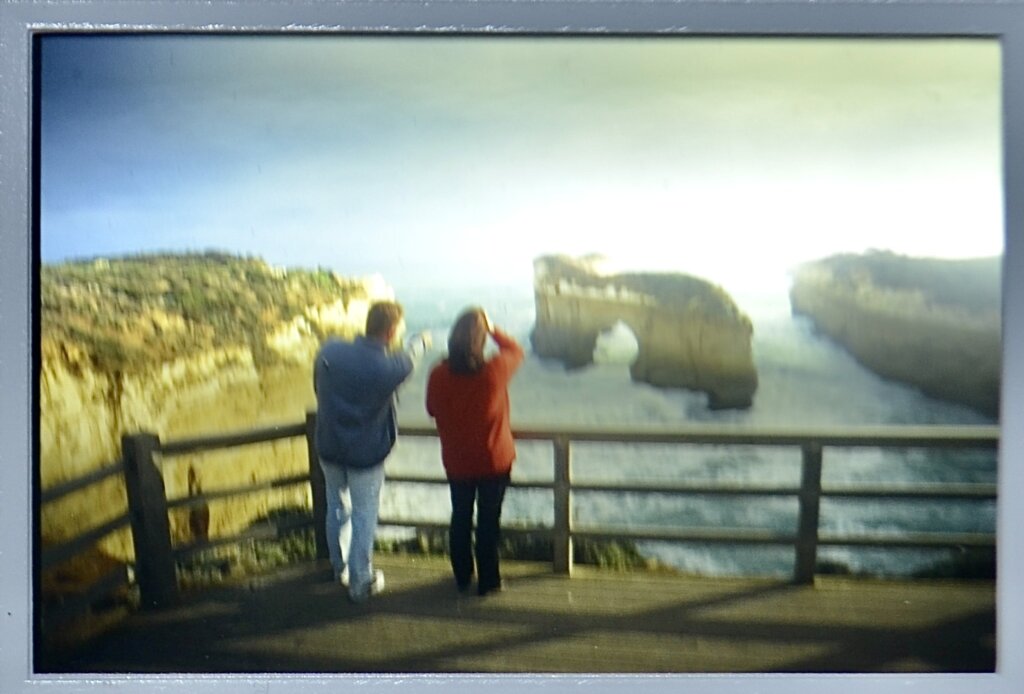
Nur vier Stunden Fahrt über den Princes Highway trennen Paradise Beach von Melbourne, doch dazwischen liegen Welten. Wie gefangen in einem Netz aus Highways brummt man auf dem South-East-Freeway durch gesichtslose, nicht enden wollende Vorstädte. Gas geben, schalten, bremsen. Autos hupen im „Stop and go“ der Ampelkreuzungen von Dandenong, Springvale und Oakleigh. Dann rollt die Maschine in der Dämmerung auf der Princes Bridge über den Yarra River, man klappt das Visier auf, schaut hoch zu den gleißenden Glastürmen der City vor dem Opalblau der Nacht und schließt in einem Augen-Blick wieder Frieden mit diesem Kontinent der Kontraste.
Melbourne heute: Modern und elegant, charmant, aber auch altmodisch und umgeben von einem Hauch von Nostalgie. In der kosmopolitischen Drei-Millionen-Metropole an der Hobsons Bay lebt ein Völkergemisch aus 140 verschiedenen Volksgruppen – Spiegelbild des modernen Australiens. Da ist der Stadtteil Richmond, nach Athen und Thessaloniki das drittgrößte griechische Zentrum der Welt. Da ist „Little Saigon“ an der Bridge und Victoria Road – eine vietnamesische Enklave. Oder die Gegend um Little Bourke Street – Chinatown! Im Zentrum erinnern viktorianische Villen und der prächtige Bahnhof Flinders Street Station an den historischen Boom dieser Stadt – den Goldrausch von 1851. Melbourne, das ist eine Metropole voller spannungsvoller Widersprüchlichkeiten, die hinter ihrer europäischen Fassade eine unbändige australische Seele kaschiert.
Ein Wettertief über dem Pazifik unterbricht die Tour. Dicke Wassertropfen trommeln sintflutartig gegen Schaufenster und sammeln sich zu Pfützen unter den Arkaden. Bunte Regenschirme wogen über dem nassen Asphalt wie traurige, tropische Schmetterlinge. An diesem verregneten Samstag nachmittag im Herbst wirkt selbst Melbourne trist und melancholisch. Die Harley bleibt in der Garage. Zeit für ein paar Drinks mit Freunden. Für eine lange Nacht, die erst im Sonnenaufgang endet mit der Unlust, schlafen zu gehen.
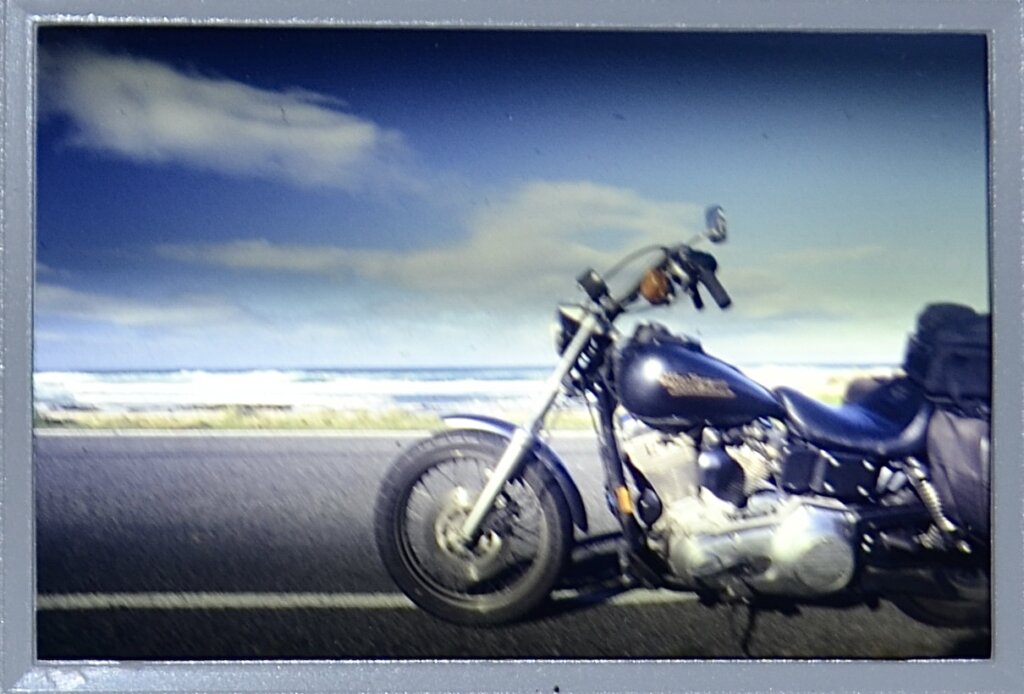
Prahran heißt das Viertel, in dem Melbourne Spagatt macht zwischen Boheme und Hautevolee. Edle Designer-Boutiquen liegen in der Chapel Street, Tür an Tür mit verblichenen Coffee-Shops, die Sandwiches mit Känguruhfleisch verkaufen. In den Jugendstil-Pubs der Toorak Road sitzen trinkfeste Freizeit-Philosophen und Exzentriker zusammen. Prahran präsentiert sich dem Reisenden in einer schrillen Melange aus Jazz-Bars und Tabakläden, Änderungs-Schneidereien, Parfüm, Reizwäsche, Hängematten und Marihuana.
Im „The Revolver“ an der Chapel Street wummert dröhnender Drum & Bass. Der Kult-Club in einem heruntergekommenen Hinterhaus ist Treffpunkt einer Melbourner In-Szene, die sich zeitlos tolerant stylt in einem Potpourri aus Punk und Trash, Techno und Flower Power. Ein Ambiente aus verschweißten Stahlträgern und Glasregalen, Pop-Art an den Wänden, davor plüschige, weinrote Sofas im Stil der 60-er Jahre. Woodstock meets Love Parade. Auf der Theke fällt der Bierschaum in den Gläsern zusammen, weil sich die Spieler – konzentriert über den Billard-Tisch gebeugt – in einer neuen Partie verloren haben. Anstoß zum Neuner-Ball. Ein lauter Knall, gefolgt vom Klackern der Kugeln über das grüne Tuch. Die Zeit steht still, und die Welt ist rund und hat in dieser Nacht nur einen einzigen Sinn: Pool-Billard bis Sonnenaufgang.
Welche Papiere man braucht, um in Australien zu bleiben? „No worries, mate,“ sagt Dan in breitem Aussie-Slang. „Just have a go!” Sein Rat klingt so simpel wie hanebüchen. „Vergiß das Rückflugticket,“ meint er, „siedel´ dich im Outback an und zieh´ dein Ding durch!” Dan arbeitet als Künstler, ein Pionier mit einer Überdosis Adrenalin und Anarchie im Blut. Er kratzt sich den Bart. Aus seinen Augen blitzt der Schalk. “Kann natürlich auch schiefgehen,” gibt er zu und lächelt verschmitzt. „Cause life isn’t that easy here!” Da ist es wieder, dieses eigenwillige Lebensgefühl downunder – nicht eine Spur politisch korrekt, aber herzlich, stur und verdammt individualistisch.
Es ist frühmorgens. Auf den Treppenstufen vor dem Pub hockt ein alter Aborigine, spielt Gitarre und singt. Die Stones, Saint of me. George heißt der Musiker. Die Dollar in seinem Hut reichen für ein paar Bier, für Fastfood und Zigaretten. Spontan setzt sich ein Traveller aus London dazu, packt sein Didgeridoo aus und stimmt mit pulsierenden Rhythmen ein. Session im Sonnenaufgang. „Hey, you´re doing pretty good,“ sagt George, „let me try that!“ Er setzt das traditionelle Holzblasinstrument seines Volkes an, bläst die Backen auf – und bringt mit Mühe und Not ein meckerndes Schnarren hervor. Eine seltsame Cross-Culture-Begegnung: Ein Aborigine interpretiert brillant Hits des amerikanischen Rock`n Roll. Und der Brite spielt das Didge. Verkehrte Welt downunder!
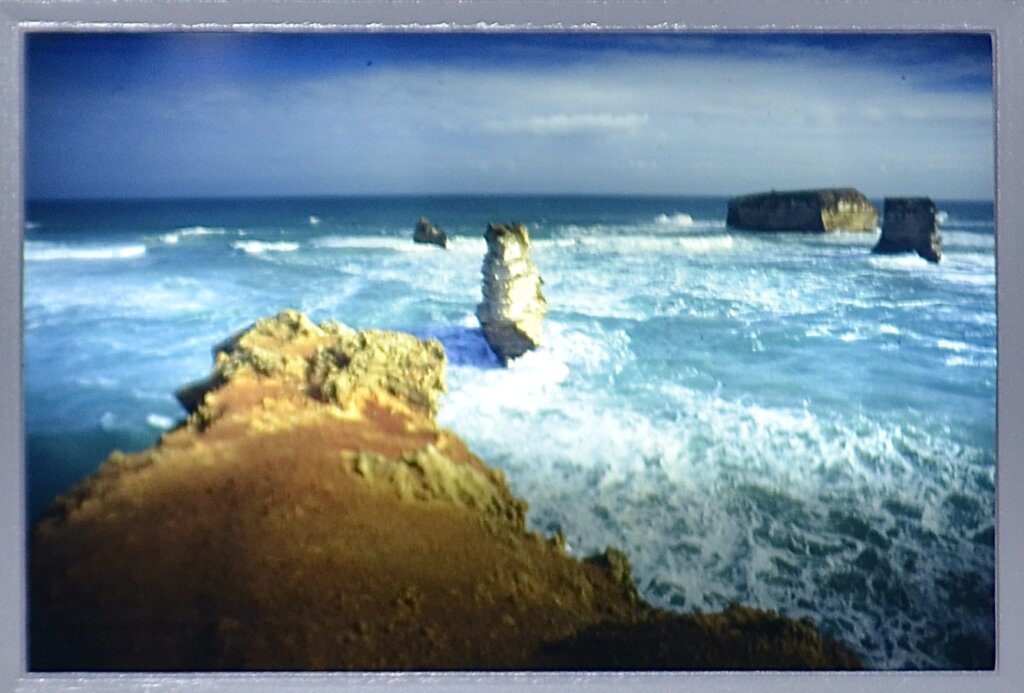
Doch eigentlich lastet die historische Entrechtung der Aborigines schwer auf einer Gesellschaft, die von der Vergangenheit wenig wissen will und ihr Heil im Jetzt und in der Zukunft sucht. Denn Australien hat eine der ältesten Kulturen der Menscheit über 40.000 Jahre lang beheimatet. Doch innerhalb weniger Generationen wurden die „First Australians“ von den weissen Eroberern um das Land und zu Hunderttausenden auch um ihr Leben gebracht. Imerhin: Auf ihrem langen Marsch zu einer neuen gesellschaftlichen Identität haben die Ureinwohner Australiens erste Erfolge errungen. So bestätigte 1992 das Oberste Gericht im Rahmen eines spektakulären Urteils, dass Australien vor der Ankunft der ersten Europäer keinesfalls terra nullis war – Land, das niemandem gehörte. Seitdem werden zunehmend mehr Landtitel an die Ureinwohner zurückgegeben.
Letzte Ausfahrt Great Ocean Road. Die State Route 100 ist der Biker-Traum schlechthin. In Lorne an der Surf Coast beginnt die Traumstrasse, die sich in Serpentinen in die Regenwälder des Otway Nationalparks windet, durch die verschlafenen Fischerdörfer Anglesea und Apollo Bay bis hin zu der grandiosen Landschaft der Shipwreck Coast. Man wiegt sich in Haarnadelkurven von einer Schräglage in die nächste, dreht den Motor in den Geraden hoch bis auf 5000 Umdrehungen, und dann fliegt die Maschine geradezu entlang einer malerischen Steilküste am Pazifik.

Plötzlich steht man da. Mit einem sonoren Dröhnen erstirbt der bullige Sound der Harley. Der Blick schweift in die Ferne, weit über die stürmische See. Salzige Windböen wehen dem Biker das Tosen des pazifischen Ozeans um die Ohren. Weißgischtend donnern die Wellen im ewigen Wechsel der Gezeiten an die sechzig Meter hohe Steilküste. Die Brandung hat den Sandstein in Jahrmillionen der Erosion zu bizarren Formationen gewaschen. Zerklüftete Klippen – die „Twelve Apostles“ zum Beispiel und der Torbogen „London Bridge“ – stehen im Wasser wie Wächter auf verlorenem Posten. Denn hier versandet Australien im Meer.
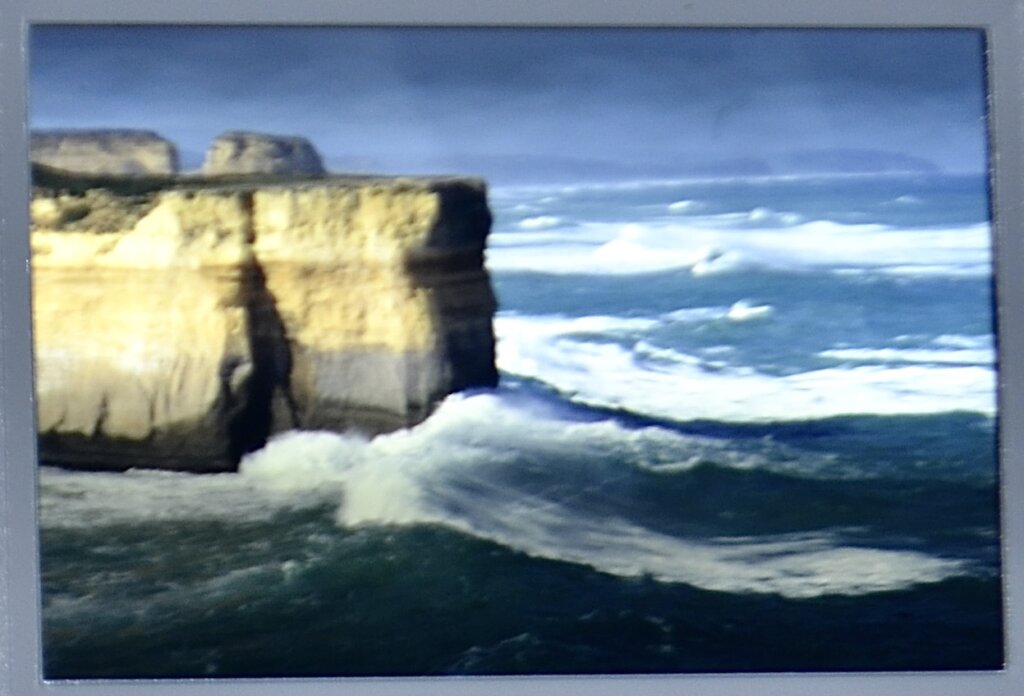
Mitternacht in Port Campbell. Viel gibt es in dem Fischerdorf nicht: Ein paar pastellfarben gestrichene Häuser, einige niedrige Bretterbaracken, die Tankstelle, drei Motels, wenige Kiefern und Zypressen, die einzigen Bäume im weiten Umkreis. Der Wind heult um die Hausecken und rüttelt an den Fensterläden der einzigen Bar.
Knarrend schlägt die Tür in den Rahmen. Schritte knirschen über den Kies. Im fahlen Licht der Straßenlaterne schimmert der Edelstahl der Maschine. Dann rumpelt die Harley auf den Asphalt und das Brüllen des Bikes vereint sich mit dem brausenden Pazifik zu einer herrlichen Symphonie.
ENGLISH
First exit Paradise Beach
A biker’s dream on the Harley-Davidson:
3000 kilometers over highways and forest roads in the south of Australia
Get the motor running / get out on the highway
looking for adventure / in whatever comes our way
Steppenwolf: Born to be wild
The myth has the color black. Three hundred kilos of stainless steel on two wheels. A flashing chrome V2 engine with 88 cubic inches of concentrated power. Helmet on, gloves on, start. Then the machine roars off. With a thunderous roar that only Harley-Davidson can bring to the road.
First gear, cock on. The prime mover rolls up with a lusty roar. A steel thunderstorm. The deafening overture to a 3000-kilometer cruise through Australia – from Sydney via Melbourne to the Great Ocean Road. Downunder, somewhere between Bonid Beach and Surfers Paradise.
On the outskirts of Sydney, traffic roars along six lanes of Highway 66. Rush hour. Towards the city center, cars are stuck in traffic jams. Out of town, the traffic is free. There are areas that exert a special fascination on travelers. Places whose names alone capture our imagination. Kathmandu, for example. Casablanca, perhaps. Australia, however, epitomizes the longing for faraway places.
Flashback: Landing approach to Sydney. In the evening glow, you look out of the window of the plane onto one of the most beautiful cities in the world. Deep below, the Harbour Bridge and Opera House are reflected in the cobalt blue of the Pacific. Mountains of clouds burn up in the sky in pink and purple, while the skyline of Australia’s secret capital ignites into millions of lights. The spectacle makes you happy.
On the road. Heading west on the old Hume Highway. Australia’s busiest highway connects the metropolises of Sydney and Melbourne over a distance of 1200 kilometers. At 100 kilometers per hour, the wind tugs at the body. The storm only calms now and then in the slipstream of powerful trucks – glittering chrome road trains in Australian XXL confection.
When you ride a motorcycle, you aim for change. A change of scenery. The ride into the unknown promises the rider pure thrills. Motorcyclists are actually modern adventurers, inspired by the possibility of the unusual. And Harley-Davidson, the myth from Milwaukee, thrives on this fascination. When Bill Harley and Arthur Davidson presented their first motorized two-wheeler in the USA in 1903, they had no idea that the Harley-Davidson Motor Company would one day build the most stylish motorcycles in the world.
On both sides of the asphalt road, green hills roll toward the horizon, just as if the waves of the Pacific Ocean – frozen into land – were spilling out into the Australian outback. Occasionally, gigantic, centuries-old trees rise out of the green like the masts off the coast of sunken sailing ships. The mighty eucalyptus trees are living witnesses of a time when dense rainforests still bordered the Great Dividing Range in southeastern Australia.
The Snowy River National Park, for example. Leaving the highway south of Canberra, the state capital, you enter the shadowy realm of this wonder forest. At some point, the asphalt ends in a gravel road. At walking speed, one chugs through a pristine jungle. The forest road winds in tight curves over mountains and steep gorges. The national park at the foot of Mount Kosciuszko, Australia’s highest peak at 2,228 meters, is so remote that you won’t see another human being all day.
Stop on the bank of a mountain stream. Suddenly it’s quiet in this green maze of foliage and branches, emerald tree ferns, fanned palm fronds and gnarled trunks. It smells of moss and damp earth. The foliage crowns of 30, 40 meter high southern beech trees hardly allow a ray of sunlight to seep into the thicket. Centuries-old jungle giants tower in the dim light of the rainforest like the living pillars of a healthy nature. A fallen giant tree lies on the ground. Its bark is covered with lichen and feels like a sponge that has been soaked with water. From the musty wood, young plants stretch out bright green leaves to the sun. They await their chance in this millennial cycle of growth, maturity, death and decay.
Actually, man is only welcome as a guest in this wild garden of God, but not at home. But the overexploitation of modern civilization has banished the exuberant power of the forest in Australia as well as in Canada and Borneo, in Amazonia or the USA. Fire, axe and chainsaw of the settlers from Europe have almost completely leveled the temperate and tropical rainforests of Australia. Today, millions of Merino sheep graze on a bare cleared earth. Stripped bare, the agro-industrial farming landscape looks almost obscene to the reporter. The remaining patches of forest alone – an estimated two percent of the former primeval forest – are like Noah’s green arks under the protection of the United Nations, securing the future of a unique flora and fauna of the Fifth Continent. They are archaic islands of fertility surrounded by a cultivated wasteland of corn and cotton fields, vineyards and pastureland.
On the map, the detour seems short. In fact, the tour takes all day – the drive to Paradise Beach. South of Eden is the village whose name sounds like a great promise of beauty, happiness and idleness. Scenically, Paradise Beach is indeed a special effect. Shimmering, the deserted beach sweeps into a boozily beautiful ocean. The crystal clear waves of the Tasman Sea lapping gently on the sand. House-high dunes stretch to the horizon. And above this surreal scenery shines a cloudless sky, as blue as Curacao.
Paradise Beach has 550 inhabitants. Old people for the most part. The retirees call themselves “permanents” – those who stay permanently. Unlike the weekend visitors from Melbourne, they live in Paradise Beach all year round – and will probably die there. The village has no pub and no gas station, no paved road, only a kiosk and, most recently, a golf course. Plain houses duck behind the dunes, spread out over the four-kilometer-long coastal area. Paradise Beach resembles an allotment garden colony that has strayed from the Ruhr to Australia’s south coast.
“Strangers climb the dunes,” says Ron Bewsell, “look out over the endless beach and at first can hardly believe what they’re seeing.” The former engineer is 72 and has lived on Paradise Beach for 40 years. Ron used to drive to the nearest cove in a beach buggy. Fishing for sharks. Three-meter-long beauties he pulled out of the Tasman Sea. “Yeah, we eat ’em, sharks taste really good!” enthuses the retiree. Fishing is still his hobby, along with golf. Only the buggy is no more, since the beach at the tip of Ninety Miles Beach has been declared a national park. The two “crazy germans” who visited Paradise Beach in 1956 are unforgettable in his memory. “They caught a shark and loaded it into their VW Beetle, but it was too big for the trunk,” he laughs, “So they packed it into the passenger seat without further ado.”
The Bewsells rarely get visitors. His wife Sylvia, tanned with flea-white hair, beams at any rate over her wrinkled face, into which the traces of a richly lived life have furrowed. Since a stroke, Sylvia can walk only very slowly, but Ron takes touching care of her. How these two people end their lives side by side, caring for and helping each other – this indeed reveals a certain happiness. Paradise Beach: to live and die on this patch of earth – could death really defeat the joy of such a life?
Only a four-hour drive along the Princes Highway separates Paradise Beach from Melbourne, but there are worlds in between. As if caught in a web of highways, one hums along the South East Freeway through faceless, never-ending suburbs. Accelerate, shift gears, brake. Cars honk their horns in the “stop and go” traffic light intersections of Dandenong, Springvale and Oakleigh. Then the machine rolls over the Yarra River at dusk on Princes Bridge, you flip open the visor, look up at the glistening glass towers of the city against the opal blue of the night, and in a single glance you make peace again with this continent of contrasts.
Melbourne today: modern and elegant, charming, but also old-fashioned and surrounded by a touch of nostalgia. The cosmopolitan metropolis of three million people on Hobsons Bay is home to a mixture of 140 different ethnic groups – a reflection of modern Australia. There is the Richmond district, the third largest Greek center in the world after Athens and Thessaloniki. There is “Little Saigon” at Bridge and Victoria Road – a Vietnamese enclave. Or the area around Little Bourke Street – Chinatown! In the center, Victorian mansions and the magnificent Flinders Street Station are reminders of the historic boom of this city – the gold rush of 1851. Melbourne is a metropolis full of exciting contradictions that conceals an irrepressible Australian soul behind its European facade.
A weather depression over the Pacific interrupts the tour. Thick drops of water drum torrentially against shop windows and gather into puddles under the arcades. Colorful umbrellas wave over the wet asphalt like sad, tropical butterflies. On this rainy Saturday afternoon in autumn, even Melbourne seems dreary and melancholy. The Harley stays in the garage. Time for a few drinks with friends. For a long night that ends only at sunrise with the unwillingness to go to sleep.
Prahran is the name of the district in which Melbourne straddles the divide between bohemia and haute cuisine. Precious designer boutiques line Chapel Street, door to door with faded coffee shops selling sandwiches with kangaroo meat. Hard-drinking leisure philosophers and eccentrics sit together in the Art Nouveau pubs of Toorak Road. Prahran presents itself to the traveler in a garish melange of jazz bars and tobacco stores, alteration tailors, perfume, sexy lingerie, hammocks and marijuana.
In “The Revolver” on Chapel Street, booming drum & bass hums. The cult club in a run-down back building is the meeting place of a Melbourne in-scene that styles itself with timeless tolerance in a potpourri of punk and trash, techno and flower power. An ambience of welded steel girders and glass shelves, pop art on the walls, plush, wine-red sofas in the style of the 60s in front of it. Woodstock meets Love Parade. On the bar, the beer foam collapses in the glasses because the players – bent intently over the pool table – have lost themselves in a new game. Kickoff for the nine-ball. A loud bang, followed by the clacking of the balls over the green cloth. Time stands still, and the world is round with only one purpose on this night: pool until sunrise.
What papers do you need to stay in Australia? “No worries, mate,” Dan says in broad Aussie slang. “Just have a go!” His advice sounds as simple as it is harebrained. “Forget the return ticket,” he says, “settle in the outback and do your thing!” Dan works as an artist, a pioneer with an overdose of adrenaline and anarchy in his blood. He scratches his beard. Mischief flashes from his eyes. “Can go wrong, of course,” he admits, smiling mischievously. “Cause life isn’t that easy here!” There it is again, that idiosyncratic attitude to life downunder – not a trace of political correctness, but hearty, stubborn and damn individualistic.
It’s early in the morning. On the steps in front of the pub, an old Aborigine squats, plays the guitar and sings. The Stones, Saint of me. George is the musician’s name. The dollars in his hat are enough for a few beers, fast food and cigarettes. Spontaneously, a traveler from London joins in, unpacks his didgeridoo and tunes in with pulsating rhythms. Session in the sunrise. “Hey, you’re doing pretty good,” George says, “let me try that!” He puts on the traditional woodwind instrument of his people, puffs out his cheeks – and with difficulty produces a grumbling croon. A strange cross-cultural encounter: an Aborigine brilliantly interprets hits of American rock’n’roll. And the Brit plays the didge. A topsy-turvy world downunder!
But actually the historical disenfranchisement of the Aborigines weighs heavily on a society that knows little of the past and seeks its salvation in the now and in the future. For Australia has been home to one of the oldest cultures of mankind for over 40,000 years. But within a few generations, the “First Australians” were deprived of their land and hundreds of thousands of their lives by the white conquerors. Nevertheless: On their long march to a new social identity, the indigenous people of Australia have achieved first successes. In 1992, for example, the Supreme Court confirmed in a spectacular ruling that Australia was by no means terra nullis – land that belonged to no one – before the arrival of the first Europeans. Since then, more and more land titles have been returned to the indigenous people.
Last exit Great Ocean Road. State Route 100 is a biker’s dream par excellence. The dream road begins in Lorne on the Surf Coast, winding in serpentines into the rainforests of the Otway National Park, through the sleepy fishing villages of Anglesea and Apollo Bay to the magnificent landscape of the Shipwreck Coast. You sway from one banked turn to the next in hairpin curves, rev the engine up to 5,000 rpm in the straights, and then the machine virtually flies along a picturesque cliff on the Pacific.
Suddenly you’re standing there. The beefy sound of the Harley dies away with a sonorous roar. Your gaze wanders into the distance, far across the stormy sea. Salty gusts of wind blow the roar of the Pacific Ocean around the biker’s ears. White-hot waves thunder against the sixty-meter-high cliff in the eternal change of the tides. The surf has washed the sandstone into bizarre formations over millions of years of erosion. Jagged cliffs – the “Twelve Apostles,” for example, and the archway “London Bridge” – stand in the water like sentinels at a lost post. For here Australia sinks into the sea.
Midnight in Port Campbell. There is not much in the fishing village: a few houses painted in pastel colors, a few low wooden shacks, the gas station, three motels, a few pine trees and cypresses, the only trees for miles around. The wind howls around the corners of the houses and rattles the shutters of the only bar.
Creaking, the door slams into the frame. Footsteps crunch across the gravel. In the pale light of the street lamp, the stainless steel of the machine gleams. Then the Harley rumbles onto the asphalt and the roar of the bike joins with the roaring Pacific to form a glorious symphony.
Erstveröffentlichung | first published: Süddeutsche Zeitung, 17.7.2001
Mehr lesen | read more:
Tourism Australia
Harley Davidson
https://www.harley-davidson.com/us/en/index.html
#ideashaveconsequences #Australien #Biker #Abenteuer


